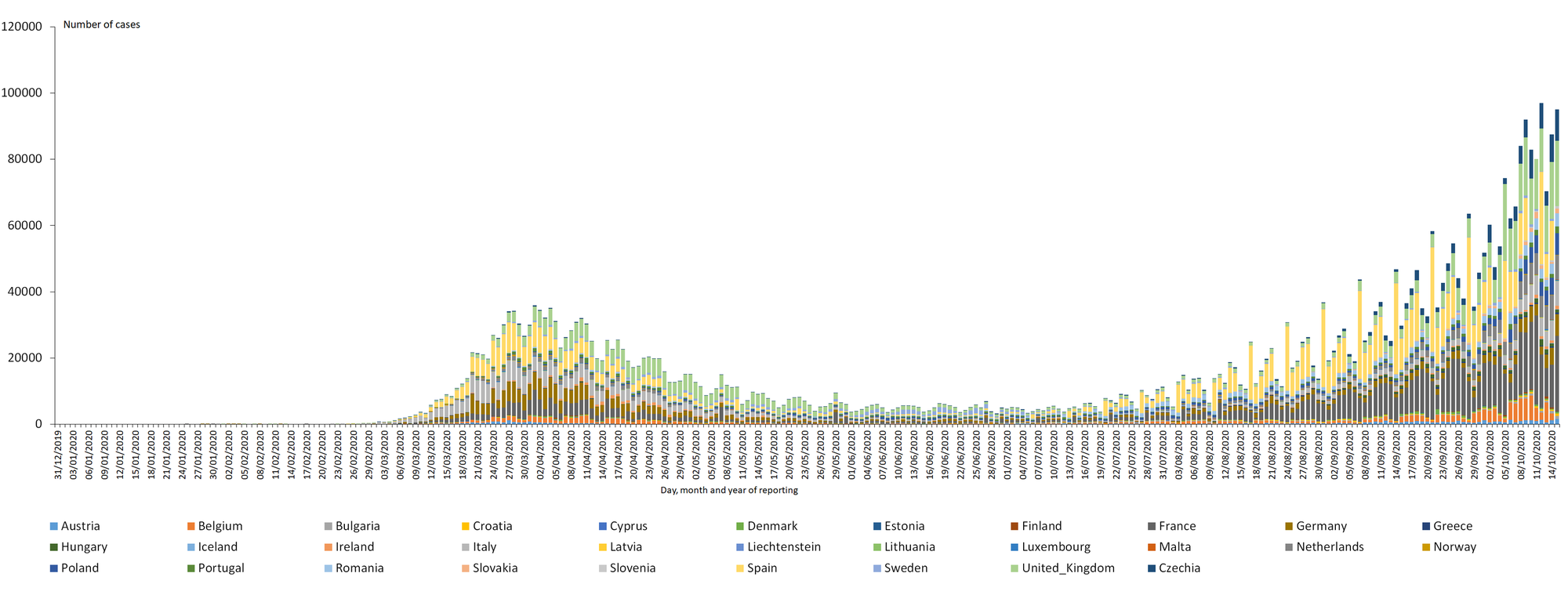As the coronavirus surges continue to ripple across the United States, Europe is bracing for what some fear is a second wave.
For the first time since early April, the European Union reported more new cases of COVID-19 than the U.S. this week, according to the Wall Street Journal. The EU and the United Kingdom reported an average of 78,000 cases a day over the seven-day period ending Oct. 12. In the same time, the U.S. reported 49,000 on average.
The resurgence is worst in the Czech Republic, Belgium, and the Netherlands. According to the European Centre for Disease Prevention and Control, the 14-day cumulative number of cases per 100,000 people for these EU member states has surpassed 400.
Larger Western European states are seeing sharp increases as well — Spain and France are both around 300, as is the United Kingdom. As a whole, the bloc is reporting the highest number of daily cases to date, roughly double the number of cases reported in the March and April peak.

The resurgence has been met by a mix of responses. In France, President Emanuel Macron announced a 9 p.m. curfew for 18 million French citizens in Paris and other regions, particularly in the south. The French government also restored its state of health emergency, according to the Associated Press.
German Chancellor Angela Merkel and the 16 German state governors agreed Wednesday to tighten some of the country’s coronavirus restrictions, including closing bars early in some areas and increasing mask mandates. Germany is faring better than other European states but still reported more cases Thursday than its March high of nearly 6,300, according to AP.
The Czech Republic, which reported the most cases per 100,000 citizens of any EU state, has closed schools after the number of hospitalized coronavirus patients doubled in two weeks.
The U.K., which has had the deadliest outbreak in Europe, relies on decisions from regional leaders — the U.K. government makes decisions for England, but Northern Ireland, Scotland, and Wales make and enforce their own coronavirus policies. England just launched a three-tiered system of restrictions based on localities’ individual metrics, which has been met with confusion and disagreement as neighboring localities attempt to convince each other to enter different restriction levels. Liverpool, for example, wants Manchester and Lancashire to enter the highest-risk tier.
Opponents of the regional tier system back what’s being called a circuit breaker approach — a short, strict lockdown that would likely shut down pubs and restaurants for a few weeks in an attempt to cut back the spread of the virus and give health officials time to reorganize testing supplies and prevent the National Health Service from being overwhelmed, according to the BBC.
Though areas in the U.S. such as New York City have begun to see caseload creep back up, the U.S. has yet to see signs of a true second wave. After the Northeast was hammered by the coronavirus in the spring, clusters and outbreaks rippled across the country, affecting Sunbelt and Midwestern states in the summer and now spiking in the Upper Midwest in states like Wisconsin, where for the first time, more than 1,000 were hospitalized with COVID-19, according to the Milwaukee Journal Sentinel.

